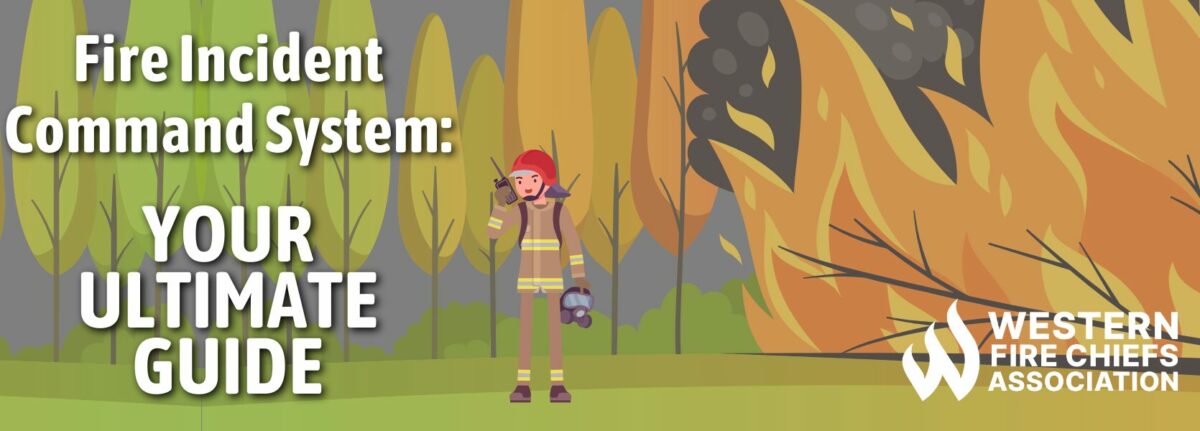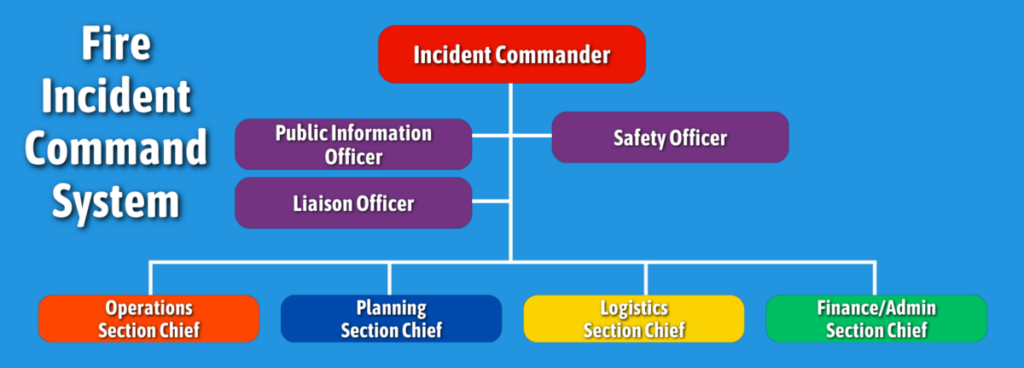Fire Incident Management Checklist
Master fire incident management with our comprehensive checklist. Ensure swift response, coordination, and safety measures during emergencies with our preplanning resources
Enhance fire department operations with our comprehensive guide to the Incident Command System (ICS). Streamline coordination for efficient emergency response.
Published:May 7, 2024
Edited:May 7, 2024

Enhance fire department operations with our comprehensive guide to the Incident Command System (ICS). Streamline coordination for efficient emergency response.
The Fire Incident Command System (ICS) is a framework designed to streamline coordination and enhance efficiency during emergency response operations. It provides a clear organizational structure, delineates roles and responsibilities, and establishes standardized procedures for communication, resource management, and decision-making. By implementing ICS, fire departments can effectively manage complex incidents, improve coordination among responders, and ensure a swift and organized response to mitigate the impact of fires on lives, property, and the environment.
An ICS is a standardized on-site management system. It is used to organize and manage emergency responses to various incidents, including wildfires.1 It provides a common framework for coordinating personnel, equipment, procedures, and communications during firefighting operations. ICS helps ensure effective communication and coordination among different agencies and organizations involved in firefighting efforts, such as fire departments, forestry agencies, law enforcement, and emergency medical services. It also facilitates clear lines of authority, responsibilities, and accountability among responders.2
The ICS has undergone a significant evolution since its inception in the 1970s. Initially developed to address the need for a standardized approach to managing emergency responses, particularly in the context of wildfires, ICS has evolved in response to changing needs, technological advancements, and lessons learned from real-world incidents.3 In its early stages, ICS focused primarily on establishing basic organizational structures and roles, such as the Incident Commander, Operations Section Chief, and Planning Section Chief. These roles provided clear lines of authority and accountability, enabling enhanced coordination among responders.
Over time, as ICS gained wider acceptance and was adopted by various emergency response agencies beyond firefighting, efforts were made to formalize its structure and processes. Standardized ICS manuals and training programs were developed to ensure consistency and interoperability among different jurisdictions and disciplines. The integration of ICS into the National Incident Management System (NIMS) advanced incident management in the United States. NIMS provided a comprehensive framework for incident management, with ICS as its central component while also addressing broader aspects of preparedness, resource management, and communication.4
With the advancement of digital technology, there has been a gradual shift towards incorporating digital tools and platforms into ICS operations. This includes the development of specialized software applications for incident management, communication, resource tracking, and situational awareness. Mobile devices, geographic information systems (GIS), and real-time data analytics have become integral components of modern ICS implementations, enhancing the efficiency and effectiveness of emergency responses.2
The ICS consists of several key components, each playing a crucial role in managing emergency responses effectively. Key elements of an ICS include1:
Incident Command Post (ICP): This serves as the central hub where Incident Commanders and their staff operate, overseeing the response effort from a strategic standpoint.
Incident Action Plan (IAP): The IAP is a detailed document outlining objectives, strategies, and tactics to guide responders throughout the incident, ensuring a coordinated approach.
Chain of Command and Unity of Command: These principles establish a clear hierarchy of authority and ensure that each individual reports to only one supervisor, avoiding confusion and enabling efficient decision-making.
Modular Organization: ICS divides the incident management structure into functional units, enabling flexibility and scalability in response operations.
Communications: Clear and effective communication is pivotal, with standardized protocols and procedures facilitating timely and accurate information exchange among responders.
Resource Management: This involves identifying, mobilizing, and allocating personnel, equipment, and supplies to support response efforts efficiently.
Planning and Intelligence: Analyzing and disseminating information relevant to the incident supports decision-making, ensuring strategies align with incident objectives.
Finance and Administration: Managing finances and administrative tasks ensures accountability, transparency, and efficient resource utilization.

Within the ICS, specific roles and responsibilities are assigned to key personnel to facilitate efficient decision-making, resource allocation, and communication. Here is a look at the specific roles and responsibilities within an ICS1:
Incident Commander (IC): At the helm of the operation, the Incident Commander oversees the entire incident management process. Responsible for setting objectives, making strategic decisions, and ensuring overall coordination, the IC provides leadership and direction to all responders involved in the incident.
Operations Section Chief: Working closely with the Incident Commander, the Operations Section Chief translates strategic objectives into tactical actions. They coordinate the deployment of resources and personnel to execute the incident action plan (IAP), managing activities such as firefighting, search and rescue, and medical assistance.
Planning Section Chief: Information is key during an emergency, and the Planning Section Chief ensures that decision-making is informed by accurate and timely data. They collect, evaluate, and disseminate information related to the incident, developing the IAP and forecasting future conditions to support operational planning.
Logistics Section Chief: Behind the scenes, the Logistics Section Chief ensures that responders have the resources they need to carry out their tasks effectively. From procuring equipment and supplies to managing facilities and transportation, they oversee logistical operations to maintain the operational readiness of response teams.
Finance/Administration Section Chief: Every operation requires sound financial management, and the Finance/Administration Section Chief is responsible for overseeing the financial and administrative aspects of the incident. From tracking costs and maintaining records to ensuring compliance with financial regulations, they facilitate accountability and resource management.
Public Information Officer (PIO): Maintaining transparency and managing public perception is vital during an emergency, and the Public Information Officer takes on this responsibility. They serve as the primary point of contact for disseminating information to the public, media, and other stakeholders, ensuring that accurate and timely information is provided.
Safety Officer: Ensuring the safety of responders and the public is paramount, and the Safety Officer plays a critical role in this regard. They identify and mitigate potential hazards, enforce safety protocols, and provide safety briefings to personnel, working closely with the Incident Commander to maintain a safe operating environment.
Liaison Officer: Collaboration is key in emergency response efforts, and the Liaison Officer serves as the bridge between the incident management team and external agencies and organizations. Facilitating communication and coordination, they ensure seamless integration of resources and support from external partners.
Master fire incident management with our comprehensive checklist. Ensure swift response, coordination, and safety measures during emergencies with our preplanning resources
Enhance fire department operations with our comprehensive guide to the Incident Command System (ICS). Streamline coordination for efficient emergency response.
Empower your fire department with effective fire hazard mitigation strategies. Enhance safety protocols and readiness to protect communities efficiently.